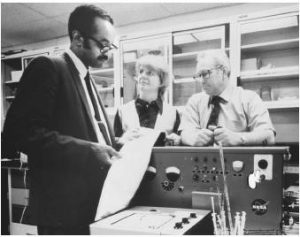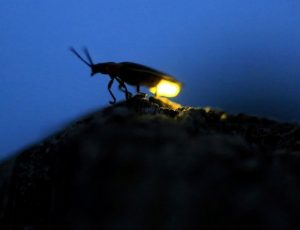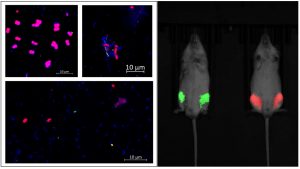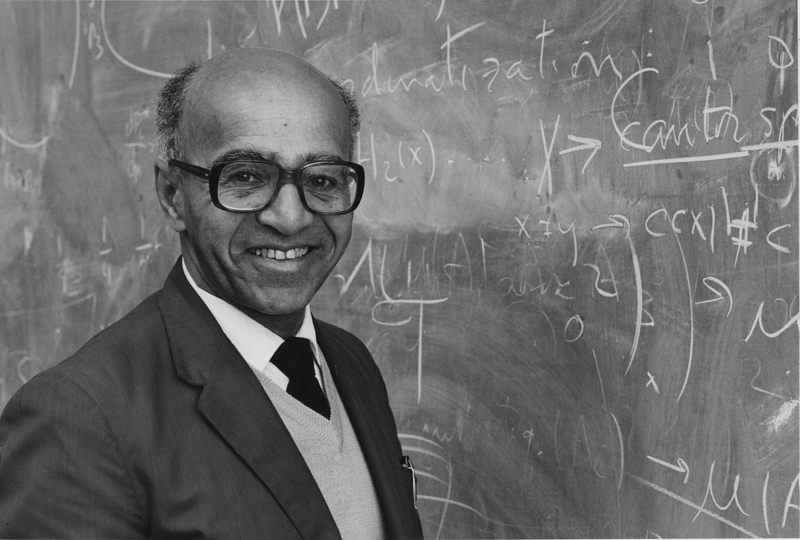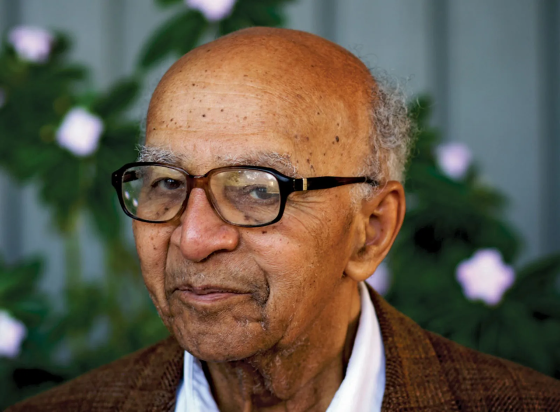Let's start out with 1 of 6 of the first physicists in America to graduate with a PhD from an American university, Dr. Edward Bouchet.
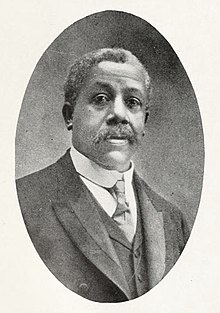
"In 1876 Edward Alexander Bouchet made history by becoming the first African American PhD physicist, and the sixth person of any race to receive a PhD in physics from an American university. Bouchet went on to educate and inspire others as a science teacher at a school for black students.
Edward Bouchet was born in September 1852, in New Haven, Connecticut. His father, a freed slave, worked as an unskilled laborer, like many black men in the town. His mother was a housewife, and he had three older sisters. The Bouchet family was active with their local church and the local abolitionist movement, and encouraged all the children to get an education.
The local public schools were segregated, so in elementary school Edward Bouchet attended the Artisan Street Colored School, which had 30 students of all grade levels, and one teacher. In 1868 he gained admittance to Hopkins Grammar School, a prestigious private preparatory school that sent its graduates to Yale College. At Hopkins Grammar School he received a classical education, studying Latin and Greek as well as geometry, algebra and history. Bouchet graduated first in his class in 1870.
He entered Yale in the fall of that year. Bouchet was not the first black student to enter Yale, but he was the first to graduate. He lived at home during his time at Yale, and was clearly devoted to his studies. In June 1874, he graduated sixth in a class of 124 students. He was the first black person to be nominated to Phi Beta Kappa.
As a talented young black man interested in science, Bouchet had come to the attention of Alfred Cope, a philanthropist in Philadelphia who was on the board of managers for the Institute for Colored Youth. The ICY was one of the few places in the city where black students could get an academic high school education. Cope wanted to build up the science program there, and hoped to bring Bouchet onto the staff.
But before recruiting him as a teacher, Cope encouraged Bouchet to continue his studies, and paid for his graduate education at Yale. Edward Bouchet spent two more years there, completing further studies in chemistry, mineralogy, and physics. His primary professor was Arthur Wright, who in 1861 had become the first person to earn a doctorate in physics from an American university. Bouchet’s original research focused on geometrical optics, and he wrote a dissertation entitled “On Measuring Refractive Indices.” Just two years after completing undergraduate studies, Bouchet became the first black person to earn a PhD in physics.
A white person with Bouchet’s credentials would have been able to obtain a university position, but even with his impressive accomplishments, not many career options were open to him as an African American. So in the fall of 1876 Bouchet went to teach at the Institute for Colored Youth, as Cope had wanted.
At ICY, Bouchet headed the school’s new science program. In addition to physics and chemistry, Bouchet taught classes in astronomy, physical geography, and physiology. An advocate for improving science education, Bouchet repeatedly asked the school’s board of managers to provide laboratory space for students to perform individual experiments. In addition to his regular teaching, Bouchet gave lectures on various scientific topics for students and staff, and even reached out to the wider community by giving public lectures on science.
Bouchet taught at the ICY for 26 years. However, by around 1900, many black young people were being pushed into vocational and technical training, rather than academic education. Even black leaders, including Booker T. Washington, advocated for this approach, arguing that this type of education was what suited black people best. Bouchet’s accomplishments clearly showed that black people were capable of academic and scientific pursuits, but in 1902 the ICY managers decided that the school would give up academic subjects and shift its focus to industrial education. Bouchet lost his job.
Bouchet spent the next several years in several different teaching positions around the country. In 1916, Bouchet returned home to New Haven in poor health, and died in 1918 at age 66. He was survived by his mother, who died two years later at age 102.
As a black man in a segregated society, Bouchet surely faced many challenges, but he didn’t leave behind many letters or notebooks, so we know little today about his thoughts on his career or his daily life. A friend of his wrote in an obituary that Bouchet was “a man of keen sensibilities and unusual refinement. He was a prolific reader and was greatly interested in the history of his own people and of his native town.”
Bouchet never married or had children. He was a member of the Franklin Institute and the American Academy of Political and Social Science and was active in the NAACP.
Over his career in teaching, Bouchet had educated many black youth in science, but black people were still excluded from most scientific education and careers for many years. It was not until 1918, the year Bouchet died, and 42 years after he received his PhD, that Elmer Imes became the second African American to receive a PhD in physics."
Source: June 1876: Edward Bouchet becomes the first African American PhD in physics.

"In 1876 Edward Alexander Bouchet made history by becoming the first African American PhD physicist, and the sixth person of any race to receive a PhD in physics from an American university. Bouchet went on to educate and inspire others as a science teacher at a school for black students.
Edward Bouchet was born in September 1852, in New Haven, Connecticut. His father, a freed slave, worked as an unskilled laborer, like many black men in the town. His mother was a housewife, and he had three older sisters. The Bouchet family was active with their local church and the local abolitionist movement, and encouraged all the children to get an education.
The local public schools were segregated, so in elementary school Edward Bouchet attended the Artisan Street Colored School, which had 30 students of all grade levels, and one teacher. In 1868 he gained admittance to Hopkins Grammar School, a prestigious private preparatory school that sent its graduates to Yale College. At Hopkins Grammar School he received a classical education, studying Latin and Greek as well as geometry, algebra and history. Bouchet graduated first in his class in 1870.
He entered Yale in the fall of that year. Bouchet was not the first black student to enter Yale, but he was the first to graduate. He lived at home during his time at Yale, and was clearly devoted to his studies. In June 1874, he graduated sixth in a class of 124 students. He was the first black person to be nominated to Phi Beta Kappa.
As a talented young black man interested in science, Bouchet had come to the attention of Alfred Cope, a philanthropist in Philadelphia who was on the board of managers for the Institute for Colored Youth. The ICY was one of the few places in the city where black students could get an academic high school education. Cope wanted to build up the science program there, and hoped to bring Bouchet onto the staff.
But before recruiting him as a teacher, Cope encouraged Bouchet to continue his studies, and paid for his graduate education at Yale. Edward Bouchet spent two more years there, completing further studies in chemistry, mineralogy, and physics. His primary professor was Arthur Wright, who in 1861 had become the first person to earn a doctorate in physics from an American university. Bouchet’s original research focused on geometrical optics, and he wrote a dissertation entitled “On Measuring Refractive Indices.” Just two years after completing undergraduate studies, Bouchet became the first black person to earn a PhD in physics.
A white person with Bouchet’s credentials would have been able to obtain a university position, but even with his impressive accomplishments, not many career options were open to him as an African American. So in the fall of 1876 Bouchet went to teach at the Institute for Colored Youth, as Cope had wanted.
At ICY, Bouchet headed the school’s new science program. In addition to physics and chemistry, Bouchet taught classes in astronomy, physical geography, and physiology. An advocate for improving science education, Bouchet repeatedly asked the school’s board of managers to provide laboratory space for students to perform individual experiments. In addition to his regular teaching, Bouchet gave lectures on various scientific topics for students and staff, and even reached out to the wider community by giving public lectures on science.
Bouchet taught at the ICY for 26 years. However, by around 1900, many black young people were being pushed into vocational and technical training, rather than academic education. Even black leaders, including Booker T. Washington, advocated for this approach, arguing that this type of education was what suited black people best. Bouchet’s accomplishments clearly showed that black people were capable of academic and scientific pursuits, but in 1902 the ICY managers decided that the school would give up academic subjects and shift its focus to industrial education. Bouchet lost his job.
Bouchet spent the next several years in several different teaching positions around the country. In 1916, Bouchet returned home to New Haven in poor health, and died in 1918 at age 66. He was survived by his mother, who died two years later at age 102.
As a black man in a segregated society, Bouchet surely faced many challenges, but he didn’t leave behind many letters or notebooks, so we know little today about his thoughts on his career or his daily life. A friend of his wrote in an obituary that Bouchet was “a man of keen sensibilities and unusual refinement. He was a prolific reader and was greatly interested in the history of his own people and of his native town.”
Bouchet never married or had children. He was a member of the Franklin Institute and the American Academy of Political and Social Science and was active in the NAACP.
Over his career in teaching, Bouchet had educated many black youth in science, but black people were still excluded from most scientific education and careers for many years. It was not until 1918, the year Bouchet died, and 42 years after he received his PhD, that Elmer Imes became the second African American to receive a PhD in physics."
Source: June 1876: Edward Bouchet becomes the first African American PhD in physics.

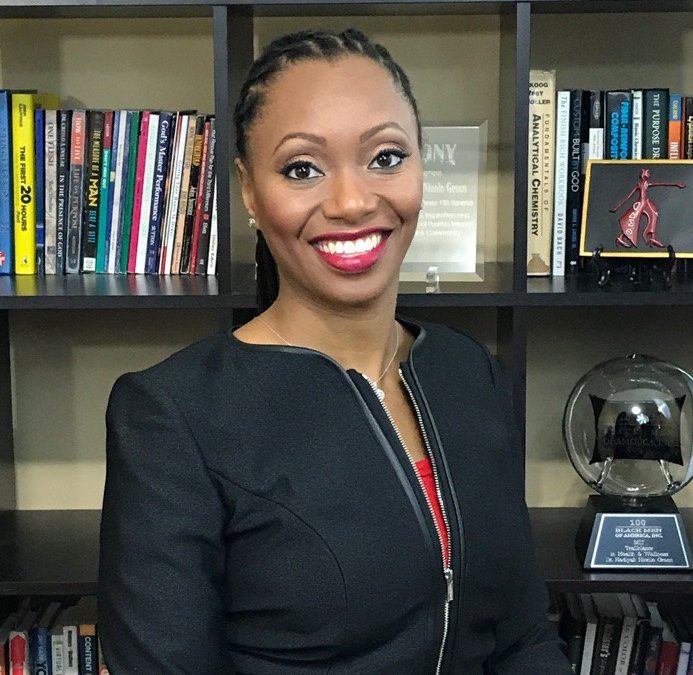


 and it was disrespectful on my part not to at least give him a heads up.
and it was disrespectful on my part not to at least give him a heads up. 